Reykjavik is Iceland’s capital and largest city. In fact, of the approximately 300,000 people who live in Iceland, about 200,000 live in Reykjavik. Situated on the harbor, in the shadow of snow-covered mountains, the size and sensibility of a small town meets the style of a city here. There’s plenty to do to keep a visitor busy for a few days, yet it’s easy enough to get around on foot. 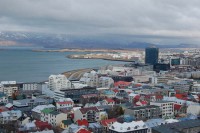 Despite the country’s recent economic collapse, it’s business as usual in Reykjavik. Shops remain open (though many offer discounts and sales), restaurants flourish, and the city’s well-dressed elite take to the street to party every weekend.
Despite the country’s recent economic collapse, it’s business as usual in Reykjavik. Shops remain open (though many offer discounts and sales), restaurants flourish, and the city’s well-dressed elite take to the street to party every weekend.
Where to Stay in Reykjavik
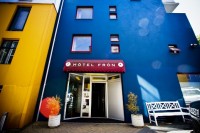 Any address listed in the 101 area will be in the city center within walking distance to the city’s best sights. Accommodation options range from the budget and basic Salvation Army Guesthouse to the swanky Hotel 101. Hotel Fron offers a stylish mid-range choice, while those looking for the convenience of kitchen and laundry facilities will appreciate the amenities offered at the inexpensive Guesthouse Sunna.
Any address listed in the 101 area will be in the city center within walking distance to the city’s best sights. Accommodation options range from the budget and basic Salvation Army Guesthouse to the swanky Hotel 101. Hotel Fron offers a stylish mid-range choice, while those looking for the convenience of kitchen and laundry facilities will appreciate the amenities offered at the inexpensive Guesthouse Sunna.
Getting In, Getting Around
There’s so much to see and do outside of the city, that chances are that most visitors will rent a car, unless they plan on only taking tours to see the sights. Parking in the city is relatively easy and most hotels offer a free lot. Those who won’t have their own wheels can either take a taxi (at around 10,000 kronur, roughly $100 US) into the city or hop on the Flybus, which costs about 1700 kr. each way and drops off at the BSI Bus Terminal, 10 minutes from the city center on foot.
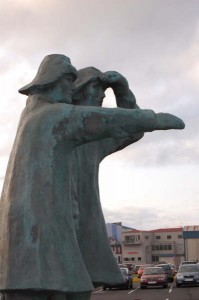 International flights arrive at Keflavik airport where everyone, visitors and locals alike, stops at the duty-free store to buy alcohol at less than half the price it sells for in the city. Keflavik is about 45 minutes from Reykjavik and the Blue Lagoon is on the way, so many people book the combo-tour that allows for a few hours of relaxation before or after their flight. Domestic flights operate out of the Reykjavik city airport, a 5-minute taxi ride from the city.
International flights arrive at Keflavik airport where everyone, visitors and locals alike, stops at the duty-free store to buy alcohol at less than half the price it sells for in the city. Keflavik is about 45 minutes from Reykjavik and the Blue Lagoon is on the way, so many people book the combo-tour that allows for a few hours of relaxation before or after their flight. Domestic flights operate out of the Reykjavik city airport, a 5-minute taxi ride from the city.
Most everything visitors will want to see in the city can be reached on foot. Anything farther out is accessible by taxi or by city bus. Routes are easily identified and rides cost 280 kronur.
Things to See and Do in Reykjavik
Hallgrímskirkja Church
Known affectionately as “The Big Church”, this landmark offers panoramic views of the city and harbor from the 8th floor. The observation deck is open to the elements, so dress appropriately.
871: The Viking Settlement Exhibition
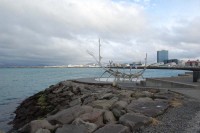 In 2001, as a new building was being constructed, the remains of a Viking longhouse were found underground. The city decided to excavate, preserve it, and turn it into an incredible interactive museum. Virtual reconstructions go into great detail on how the Viking settlers lived and audio visual presentations give a succinct but informative history of Viking culture.
In 2001, as a new building was being constructed, the remains of a Viking longhouse were found underground. The city decided to excavate, preserve it, and turn it into an incredible interactive museum. Virtual reconstructions go into great detail on how the Viking settlers lived and audio visual presentations give a succinct but informative history of Viking culture.
Saga Museum and Culture House
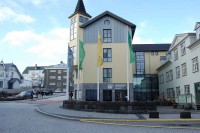 Both the Saga Museum and the Culture House provide another up-close look at Iceland’s Viking history. Wax figures at the Saga Museum portray characters and storylines from the country’s Sagas, the Viking stories handed down through generations. The Culture House hosts rotating exhibits along with a permanent display of the beautifully illustrated Saga manuscripts. Admission is free on Wednesdays.
Both the Saga Museum and the Culture House provide another up-close look at Iceland’s Viking history. Wax figures at the Saga Museum portray characters and storylines from the country’s Sagas, the Viking stories handed down through generations. The Culture House hosts rotating exhibits along with a permanent display of the beautifully illustrated Saga manuscripts. Admission is free on Wednesdays.
Reykjavik Harbor Whale Watching
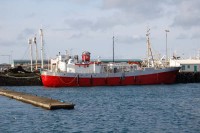 Reykjavik’s small and picturesque harbor can be walked in a matter of minutes. Snap pictures at the “Viking Boat” sculpture and then check out whaling boats (designated by the H painted on them) in from the sea. In season (May to September) book a whale watching tour with Elding; their information booth is located in the harbor and it’s from here that tours depart.
Reykjavik’s small and picturesque harbor can be walked in a matter of minutes. Snap pictures at the “Viking Boat” sculpture and then check out whaling boats (designated by the H painted on them) in from the sea. In season (May to September) book a whale watching tour with Elding; their information booth is located in the harbor and it’s from here that tours depart.
Zoo and Botanical Gardens
The Zoo and Botanical Gardens are part of a park that is also home to an aquarium and petting farm. The park is free for children under 4 years old and offers rides, games, and a chance for little ones to interact with native animals, like the docile Icelandic horse.
City Pools
Taking a dip in one of the city’s geothermally heated pools is a weekly (if not more often) ritual for many residents. The Arbaejarlaug city pool is open year round. It’s kept at an average temperature of 84 degrees Fahrenheit and even has a large waterslide.
Shopping
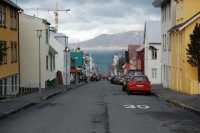 Laugavegur is the most famous street in Reykjavik and is known as the main shopping street. Browse countless wool and souvenir shops selling traditional Icelandic sweaters, called lopapeysas, along with wool socks and hats. Contemporary and designer shops dress Reykjavik’s young elite. Serious shoppers can spend a day at the Kringlan shopping center – home to several European clothing chain stores, one of the worlds’ most-expensive McDonald’s locations, and a movie theatre.
Laugavegur is the most famous street in Reykjavik and is known as the main shopping street. Browse countless wool and souvenir shops selling traditional Icelandic sweaters, called lopapeysas, along with wool socks and hats. Contemporary and designer shops dress Reykjavik’s young elite. Serious shoppers can spend a day at the Kringlan shopping center – home to several European clothing chain stores, one of the worlds’ most-expensive McDonald’s locations, and a movie theatre.
Travelers on a budget can head to the weekend flea market, Kolaportid, by the harbor. Among the recycled DVDs, toys and vintage clothes, stalls sell handmade Icelandic sweaters at about half of what they cost in the stores.
Any foreigner who spends more than 4000 kronur in a store should pick up a form that entitles them to 15% of the purchase price back as a tax refund. Keep the forms, fill them out, and collect the refund at the Tax-Free stand at the international airport.


Comments